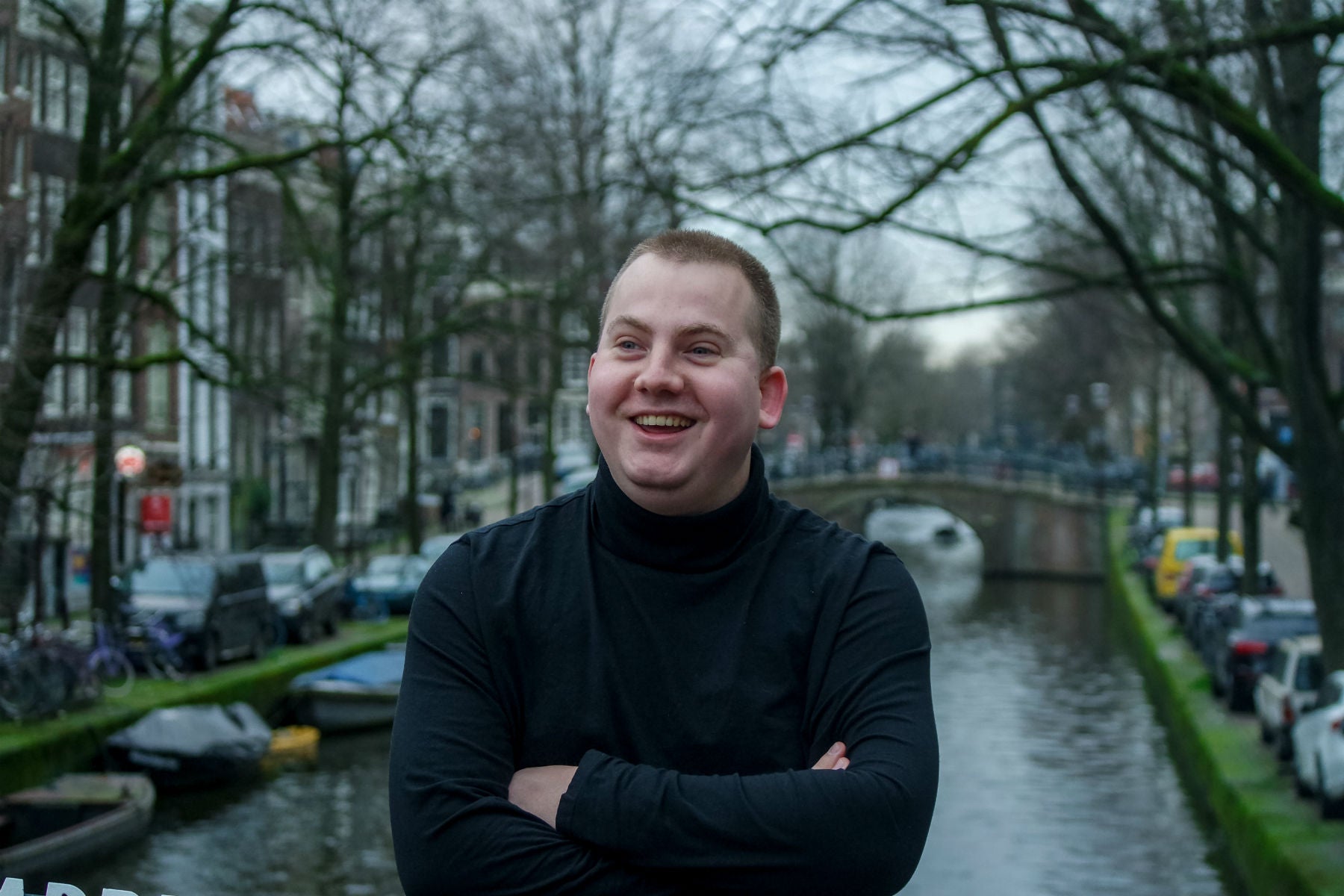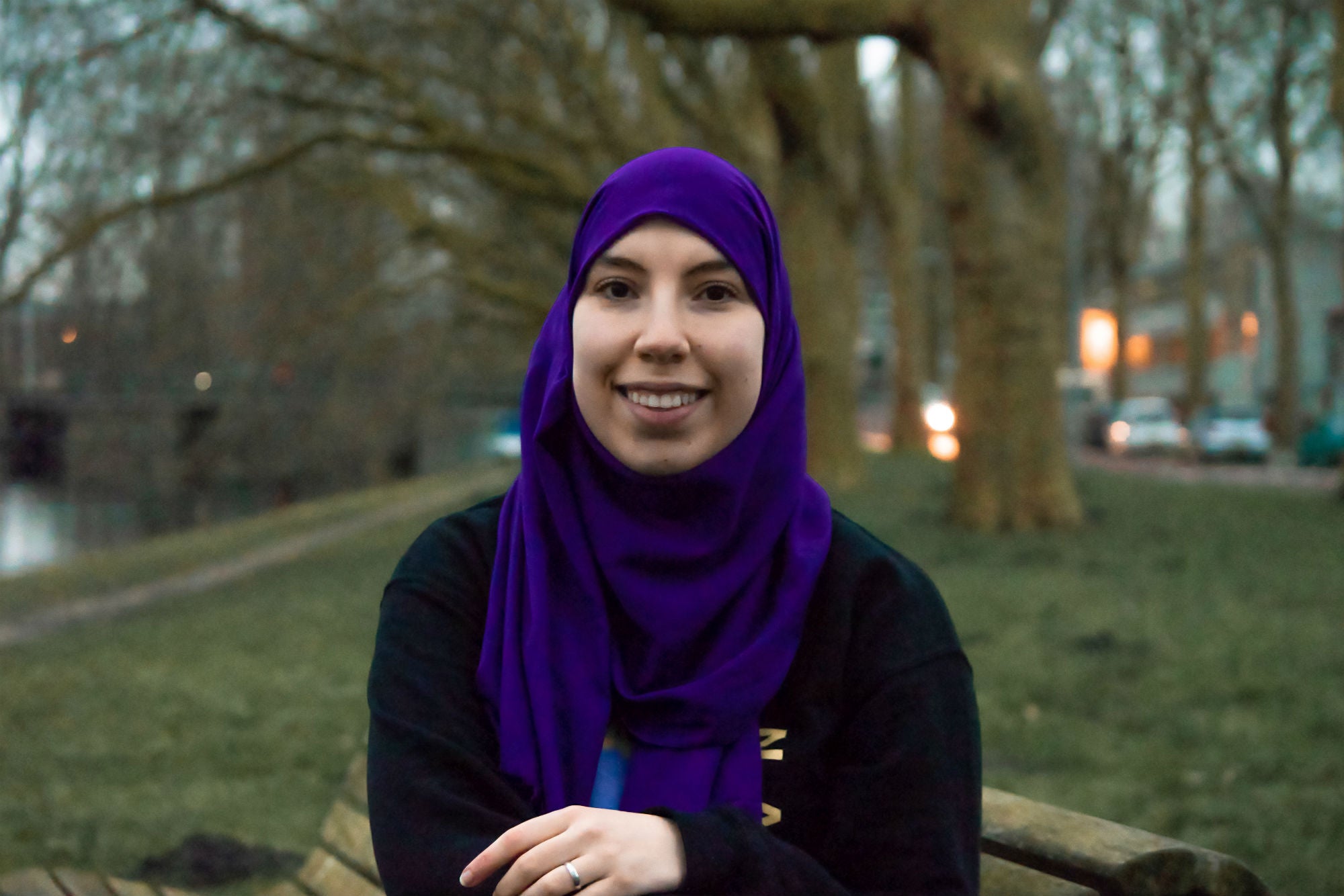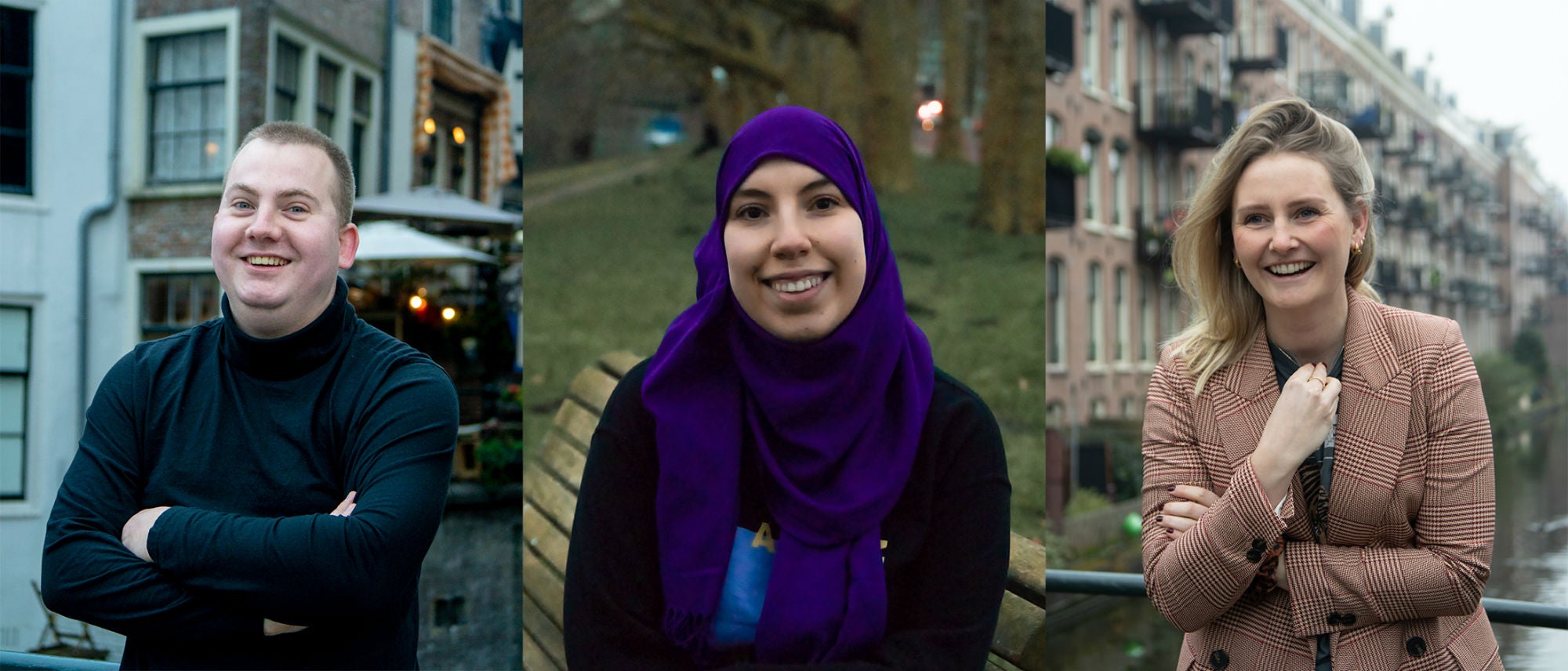The VU alumni family is now more than 100,000 strong. Where did they end up after their studies? In this section, we feature three alumni from the same degree programme. This time: alumni of Media, Art, Design and Architecture.

Mike Warrink (26) graduated in 2018 and one of his jobs involves running an artist management bureau.
Why did you choose to study MADA?
“During my last year at secondary school, I realised that I was interested in art, and especially its theoretical aspect. So I enrolled in the study programme, which had just been set up. The thing I enjoyed most was that you learn how to read any type of image in an interdisciplinary manner, whether it’s an ad flyer, a work of art, a film still, or a photo. I still unconsciously analyse images that way. Sometimes I have to watch a movie several times to turn off that switch.”
What are you doing now?
“To cover my expenses, I work at the Rijksmuseum as a kind of mix between a gallery attendant and a host. I make sure that the art is still hanging in place at the end of the day, and I can use what I’ve learned during my studies to tell visitors a bit about the art.”
“And five years ago, my father and I started a research project called ‘Capturing Creativity’. In the project, we study the origins of creativity in an interdisciplinary manner. We ask artists how they define creativity, and we dive deeper into their individual creative processes. We’ve already done more than 100 portraits so far, including ones for Jimmy Nelson, Danny Vera and Peter Lindberg. Our goal is to use it to produce an overview exhibit and a publication in the form of a book.”
You also run an artist management bureau. Do you ever have a moment to sit still?
Mike laughs. “Not often. I really enjoy my work. The bureau started more or less by accident. As part of my research during the Bachelor’s, I had a chance to do an internship with the marketing department at Paradiso. That eventually led to working for the Popronde, a travelling showcase festival. In the process, I got to know the music industry, and at a certain point musicians started to approach me with management-related issues. That’s how OFELIA came about. Now I help several artists with things like management, bookings, marketing and scheduling. It doesn’t earn a profit yet, but it gives me a lot of satisfaction.”

Samya Hafsaoui (25) graduated in 2019 and is now a journalist, hostess and author.
One year you were a full-time student, and the next you were everywhere in the media. How did that happen?
“Near the end of my studies, I signed up for the BNN talent class. After one session, we had the chance to attend a recording of De Wereld Draait Door. Right before the broadcast started, Matthijs van Nieuwkerk asked us who would take over the show after he retired, and I raised my hand. He said that I should go ahead and host the promotional clip. That went so well that the web series De Taxi Terug and the Ramadanjournaal quickly followed. Sometimes my work still feels surreal. I mean, I get paid to interview fun people!”
Have your studies come in handy in your current job?
"Absolutely. Especially the course on Semiotics; that still helps me a lot. It taught me that people always interpret images within a specific context. So it doesn’t matter who you are, what clothes you wear or what you say. What you are will always be part of their frame of reference.”
“That means when I receive criticism, I don’t take it too personally. When it’s about my articulation or how fast I talk, I do, because that’s constructive criticism. But when people criticise my head scarf, I know that it’s not about me, it’s about what I represent. I can look beyond myself and not take it personally. That’s about the media version of myself. The Samya on TV is different from the Samya who does the washing up at home.”
Your debut novel will be published soon. Can you give us an idea of what to expect?
“It’s about a Moroccan girl in her 20s who works in a coffee shop. She and a co-worker start dating for their families, but then she falls in love with someone else. It’s a classic love triangle, but with a bi-cultural tint. When I was young, I read a lot of Carry Slee and Francine Oomen, but I didn’t recognise myself in the characters. The stories didn’t address the issues that I saw in my life as a teenager, like not being allowed to have sex before marriage and having to get married by the time you turn 20. I hope that this book sparks a revolution in stories about teenage girls that we’re currently lacking in the media.”
“The novel will be available to download for free starting on 27 March. The Fonds ZOZ and the Prince Bernhard Culture Fund provided a grant to make the book available for free. I didn’t feel right asking money for it, because I want it to be available to everyone. If anyone else would like to publish a book: the fund is open to new authors as well.”

Liza de Vries (27) graduated in 2017 and works as a food stylist.
Why did you choose to study MADA?
“Before I enrolled in the programme, I studied allround styling at the Academie Artemis. That was fun, but it was mainly practical and future-oriented, and I wanted to learn more about the history of design. The MADA study programme felt like a Master’s after my university of applied sciences degree, where we studied design, media, art and architecture from a historical and theoretical perspective. For my thesis, I studied the IKEA guide in detail, and examined how the role of the Dutch woman in the household has changed over the years.”
“I still enjoy the fruits of my studies. It gives me self-confidence to know where things come from. And if I don’t know that, then I know how to do the thorough research to find out. I would never present something that came entirely from my gut feeling. I always want to justify my ideas. Plus, I think that the historical context and the artists’ motivations are important. Chances are that you’re missing the point entirely.”
After your studies, you ended up in the world of food styling. Tell me more!
“As a teenager, I got sick to death of the standard meat-and-potatoes, so I decided to set my own course in the kitchen. My parents were my lab rabbits. That’s where my love for food was born. A while later, during my first side job in the restaurant industry, I started to experiment with menus and dishes, and now I’ve made that combination my profession.”
What exactly do you do?
“As a food stylist, I mainly focus on making food more attractive. I make sure it looks as appetizing as possible. Some people think that I’m just playing around with food, and they don’t take it seriously, but I think it’s amazing. I also help restaurants with the design of their logos, websites and menus. That’s more important than it may seem, because sometimes the menu hanging outside will determine if the guest comes inside to eat or not.”
Can you give us some tips you’ve learned in your career?
“The dish has to look as appetizing as possible in pictures. Looking through the lens and seeing the plate served in front of you are two completely different things. So there are some tricks of the trade. For example, you can add grill stripes to a steak using shoe polish or black paint. For coffee or sparkling water, I’ll blow some air into the drink with a straw just before taking the photo. I also spray water on salad to make it look fresher. But to me, it’s more of a challenge to use only edible elements. And unfortunately, I can’t eat everything up when I’m done. By the time we’ve finished photography, the dish is cold and I have to move on to the next thing.”






